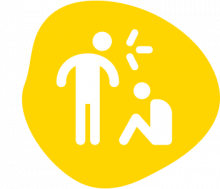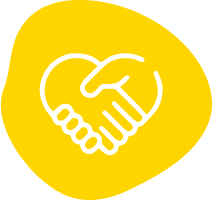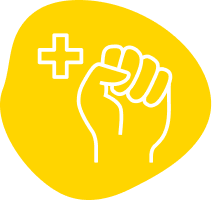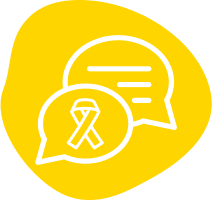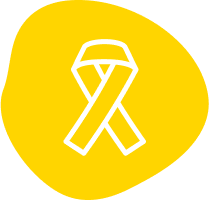“The way the lesson was introduced got me in a form of self-stigmatisation, especially when the teacher mentioned that he feared being around HIV-positive people.” – Participant in the Positive Learning youth consultations (East and Southern Africa).
The UN’s International Technical Guidance on Sexuality Education underwent a major revision and update in 2018, to take account of recent evidence and lessons learned from the implementation of CSE in a range of settings. Of particular relevance to adolescents and young people living with HIV is section 8.2, ‘HIV and AIDS Stigma, Treatment, Care and Support.’ Its objectives include the responsibility for all learners to contribute to the creation of safe and supportive environments for people living with HIV, and to respect and protect their rights to equal love, respect, support, care, timely treatment and fulfilling relationships.
Much sexuality education has had a strong focus on HIV prevention, but has not addressed or met the needs of adolescents and young people already living with HIV. In recent years, there has been greater recognition that a prevention-only emphasis in relation to HIV is misguided and potentially stigmatising. Schools and teachers have a duty of care to ensure that information about HIV and HIV prevention is provided without perpetuating stigma and prejudice against those living with HIV. No school or learning space, even in low-prevalence settings, should assume that all learners are HIV-negative, or are unaffected by HIV. When teaching about HIV, there should also be an emphasis on people living with HIV as valuable in their own right, not just in relation to how they can prevent transmission to others.
In-school and out-of-school provision are equally important – and complementary – routes to achieving CSE quality and uptake. The UN’s recent guidance on out-of-school CSE includes specific recommendations for programme development, implementation, teaching and learning methods to meet the needs of adolescents and young people living with HIV, recognising that they may have many diverse identities and affiliations.
Out-of-school CSE is especially significant for adolescents and young people who are not in school; in contexts where CSE is not included in the school curriculum, or where in-school CSE is not comprehensive or of high quality; and where in-school CSE is not tailored to the needs of specific groups of adolescents and young people. The digital space is also an increasingly important source of information and support to adolescents and young people living with HIV, where different media can be used to reach out to diverse audiences and where adolescents and young people themselves can create and share content.
In preparing teachers to provide CSE, the quality and relevance of both teacher training and curriculum are key. There is a direct parallel with findings about what makes CSE effective for adolescents and young people; teachers, too, learn best about HIV when the content is context-specific and embedded in lived experiences, and when teaching methods are participative, actively engaging and encourage personal reflection. Otherwise it becomes much more difficult for teachers to translate their training into effective delivery in the classroom. It is important for the education sector to hold schools and teachers accountable for the quality of the CSE sessions they deliver.
CSE programmes that address issues of gender and power have been shown to be five times as effective as those that do not, being associated with a significantly lower rate of sexually transmitted infections and unintended pregnancy. CSE also has greatest impact when it is actively linked with local adolescent- and youth-friendly services, including access to commodities such as condoms.


Recommendations
1.1Provide good quality, comprehensive sexuality education for all learners. CSE should include not just information on HIV prevention, but accurate and non-judgemental information to eliminate HIV-related misconceptions, reduce HIV-related stigma, and increase knowledge and understanding of HIV treatment, care, support and rights.
1.2Deliver CSE within a framework of gender equality and shared responsibility and respect for sexual and reproductive health and rights, with an emphasis on communication skills, social and emotional learning, self-confidence, self-worth, resilience, consent and pleasure. This should include the development of skills, attitudes and behaviours that prevent and address gender-based violence against adolescent girls, women and gender-diverse communities.
1.3Ensure that sexuality education covers the rights of people living with HIV to have fulfilling relationships and sexual lives, and that all teachers and learners understand that being on effective antiretroviral treatment with an undetectable viral load means HIV cannot be passed on to sexual partners (undetectable equals untransmittable, or ‘U=U’).
1.4Supplement in-school and out-of-school CSE with multiple sources of information on HIV, sexuality, sexual and reproductive health and rights, and harm reduction, that can be accessed discreetly, either in the community or through trusted digital resources such as smartphone apps, chatbots, or other online resources and platforms.
1.5Work with parents/caregivers, community members, traditional and religious leaders to combat misconceptions around CSE and help them better understand the realities, rights and sexual and reproductive health needs of adolescents and young people living with HIV.
1.6Ensure that sexuality education addresses the specific needs and rights of adolescents and young people in all their diversity, including young men who have sex with men and young transgender people, and covers issues around sexual orientation, gender identity and expression in an evidence-based and non-discriminatory way.
1.7CSE should use trauma-informed approaches, recognising that some adolescents and young people may have experienced trauma, individually or as members of a group, based on discrimination, violence (including sexual violence), familial conflict or humanitarian crisis.


